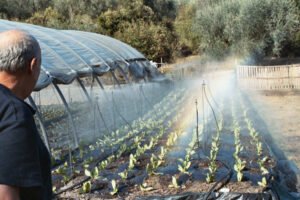A key part of the European Union’s Biodiversity Strategy for 2030, the Nature Restoration Law, is “the first continent-wide, comprehensive law of its kind.” The EU first published the Biodiversity Strategy for 2030 in May 2020, part of what it called the “Green Deal”, which is also referred to as Sustainable Europe Investment Plan (SEIP), a series of proposals and policies with the ambition of no net emissions of greenhouse gases by 2050 and for economic growth to be decoupled from resource use. In the face of over half of Europe’s endemic trees being threatened with extinction , and 81% of protected habitats and 63% of species in the EU having a poor or bad conservation status, as well as the extreme weather events of the deepening climate crisis, the EU felt the need to sanctify climate action through policy.

On June 22 2022, the European Commission published the Nature Restoration Law, a proposal for legally binding targets to revive forests, wetlands, sea and landscapes that have been adversely affected by human development, with emphasis on those with the most potential to capture and store carbon, and that prevent and reduce the impact of natural disasters. The focus is to safeguard at least 30% of EU land and 30% of EU seas designated as protected areas. At least a third of these protected areas — including all remaining primary and old-growth forests — will be under, what it terms, “strict protection”. The Law has seven key goals: increase pollinator populations by 2030; maintain green urban areas; protect biodiversity in agroecosystems; restore and rewet drained peatlands; protect marine habitats; improve river systems; and regulate forestry activities. The United Nations Environment Programme stated the proposal comes at a “crucial time”, highlighting that “since 1970, wetlands in western, central and eastern Europe have shrunk by 50 per cent”, and in the last decade, “71 per cent of fish and 60 per cent of amphibian populations have declined.”
As the proposal was reviewed and amended by EU States and Members of the European Parliament, opposition emerged through agricultural, fishing and forestry lobby groups. The centre-right European People’s Party (EPP), the largest group within the Parliament, called for the Law to be scrapped due to potential negative impacts on farmers. They also claimed the Law would require the destruction of small towns to restore ecosystems. This led to CEOs and executives from over 80 companies — including H&M Group, IKEA, L’Occitane en Provence, Nestlé, Salesforce and Unilever — to urge the EU to “adopt regulations that promote nature protection, restoration, and sustainable use of natural resources” and to “uphold, strengthen, and enforce existing environmental legislation to address the nature and climate crises together.” They also stated how “businesses and financial institutions depend on nature” and the importance of their role in the transition to an economy that supports and nurtures our environment. This stance was echoed by the World Economic Forum, who believe implementation of these policies will lead to $10 trillion in new annual business value and create 395 million jobs by 2030.
Earlier this year, the European Parliament’s Agriculture Committee met on May 23, and its Fisheries Committee on May 24, where members of the Identity and Democracy Group; European Conservatives and Reformists Group; Renew Europe; and the EPP rejected the entire legislative text of the Restoration Law. During the final round of negotiations on May 31, where amendments to the legislation were discussed, this coalition of critics succeeded in weakening the text of the Law around the non-deterioration of ecosystems and the definition of “strict protection” areas.
The vote for the Nature Restoration Law began on June 15 in the European Parliament’s Environment Committee and after three hours of discussion, votes were tied at 44 for and 44 against, with a final vote being scheduled for June 27.

On June 20, the European Council reached an agreement on a proposal for the Nature Restoration Law. The revised text balances the ambition of the initial proposal with the amendments pushed for by critics. It was agreed a lack of data of the condition of some habitats created a difficulty to quantify their need for improvement, so quantitative restoration measures would only apply to areas where the condition of habitats is known. This led to the creation of a timeframe for the unknown habitats where member states will have until 2030 to determine 90% of the area of terrestrial habitats, and 50% of marine habitats. The condition of all habitats would need to be known by 2040.
The revised Law was voted on by the European Parliament’s Environment Committee, as scheduled, on June 27. Once again, votes were tied at 44 for and 44 against, and the legislation was sent to plenary, as proposed by the European Commission, with a recommendation to be scrapped in its entirety.
On July 11, the European Parliament debated the Nature Restoration Law, and on July 12 a vote, on whether to reject the proposal outright, had 312 votes for, 324 against and 12 abstentions, so discussions continued and a final vote resulted in 336 votes in favour of the Law, 300 against and 13 abstentions. The Parliament stated that the Law should apply once the European Commission has provided data on “necessary conditions to guarantee long-term food security and when EU countries have quantified the area that needs to be restored to reach the restoration targets for each habitat type.” This amendment was criticised by Green groups.
While the success of the vote is important for the health of the environment, the amendments pose a question: does the added timeframe create a necessary delay to gather information on unknown habitats or to allow for further inaction? The commitment to protect and restore known habitats still inspires belief in the possibility of the Nature Restoration Law, and we hope its adoption leads to significant action across the European Union.
Anton Rivette is a writer and photographer. He leads storytelling at eco-nnect.
You might also like: COP27, a cautionary tale













